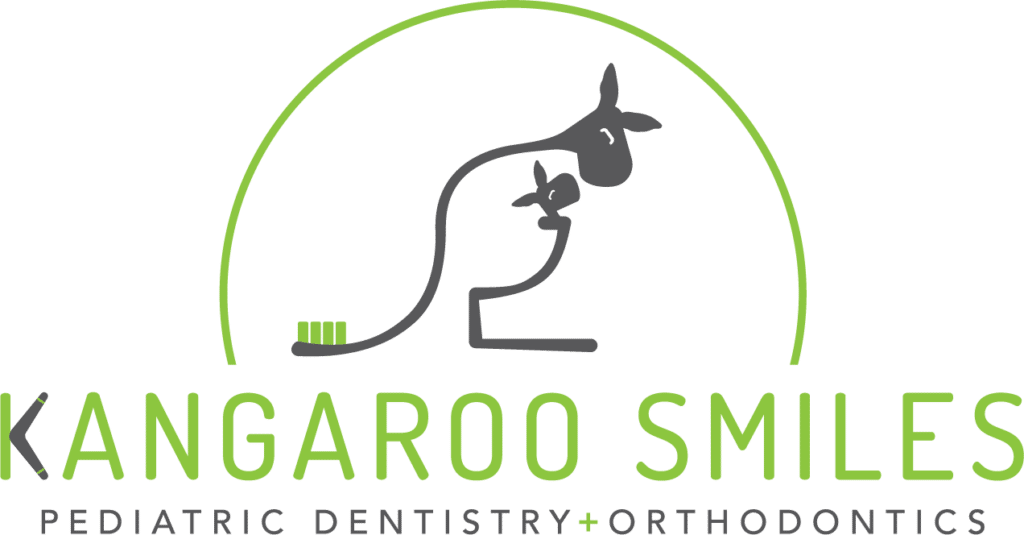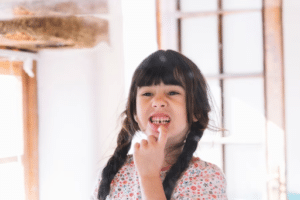Hey there, concerned parents! We get it—raising a happy, healthy child is a top priority, and their dental health plays a big part in that equation. So, if you’ve ever found yourself wondering, “When should my child see a dentist, and why does it matter?” Relax; you’re not alone.
Dental health is a vital aspect of your child’s overall well-being, and as parents and caregivers, it’s crucial to ensure they have a bright and healthy smile from a young age. Seeking the right information about when to start bringing them to dentist appointments is a valuable initiative.
The First Dental Visit
When Should My Child See a Dentist?
Every parent asks this question: “When should my child see a dentist?” Your child’s first dental appointment is a significant milestone in their life. But when exactly should you schedule it? The general recommendation is to plan their inaugural visit when they reach around the age of one or when their first tooth makes its debut.
Yep, that’s right, as soon as those little chompers start showing up!
What to Expect During the First Visit
The first visit to the dentist is an opportunity to build a positive and trustful relationship between your child and the dental care team. Here’s what you can typically expect during this initial appointment:
- Dental Examination: The dentist will perform a gentle examination of your child’s mouth to check for any early signs of dental issues. Don’t worry; this is usually a quick and painless process.
- Teeth Cleaning: Even those baby teeth need some cleaning! The dental hygienist will clean your child’s teeth using a soft, child-friendly toothbrush.
- X-rays (if necessary): Depending on your child’s age and dental development, the dentist may recommend X-rays to get a closer look at their teeth and jaw.
Establishing a Positive Dental Experience
Aside from knowing “When should my child see a dentist?” making their first visit a positive and comfortable experience for your child is essential. Dentists often go the extra mile to make kids feel at ease. They may use fun, child-friendly language and show your little one some of the cool dental tools they’ll use.
Dental Milestones
Eruption of Primary Teeth
The arrival of those first baby teeth is an exciting moment for both you and your child. Typically, primary teeth, also known as deciduous or baby teeth, start to emerge between the ages of six months and one year. These little teeth play a crucial role in your child’s early development, allowing them to chew food properly, speak clearly, and smile confidently.
Transition to Permanent Teeth
As your child grows, they will naturally start to lose their baby teeth, making way for their permanent counterparts. This transition usually begins around the age of six and continues through the early teenage years. It’s essential to monitor this process to ensure that permanent teeth are coming in correctly and that any potential issues are addressed promptly.
Loss of Baby Teeth
The loss of baby teeth can be an exciting and sometimes emotional experience for your child. It’s essential to reassure them that losing teeth is a natural part of growing up and that their “grown-up” teeth will replace them.
Signs It’s Time for a Dental Visit
Aside from asking for the recommended time on “When should my child see a dentist?” there are also some signs you need to look out for. As your child continues to grow and their dental development progresses, it’s crucial to be aware of them to know when to seek immediate dental care and prevent minor issues from turning into more significant problems.
Toothache or Pain
If your child complains of persistent toothaches or pain in their mouth, it’s a clear sign that something needs attention. There are many different conditions that can cause toothaches, such as cavities, infections, or even a loose tooth. A visit to the dentist can identify the source of the pain and provide relief.
Changes in Tooth Color or Structure
Keep an eye out for any changes in the color or structure of your child’s teeth. Discoloration, spots, or visible damage could be indications of dental problems. A dentist can assess these changes and recommend appropriate treatment.
Gum Problems or Bleeding
Bleeding gums, redness, or signs of inflammation may indicate gum issues such as gingivitis or gum disease. It’s essential not to ignore these signs, as gum health is closely tied to overall oral well-being.
Persistent Bad Breath
While occasional bad breath is normal, persistent bad breath (halitosis) can be a sign of an underlying dental issue, such as tooth decay, gum disease, or an oral infection. A dentist can help identify the cause and recommend solutions.
Unexplained Sensitivity
If your child experiences sudden sensitivity to hot or cold foods and drinks, it could indicate a dental problem like a cavity or tooth fracture. A prompt evaluation by a dentist can determine the cause and appropriate treatment.
Loose or Knocked-Out Tooth
Accidents happen, especially with active kids. If your child experiences a loose tooth due to trauma or has a tooth knocked out, immediate dental care is crucial. The dentist can assess the damage and take steps to save the tooth if possible.
Preventive Measures
Proper Brushing and Flossing Techniques
Teaching your child proper brushing and flossing techniques is the foundation of good oral hygiene. Here are some tips:
- Choose the Right Toothbrush: Use a soft-bristle toothbrush suitable for your child’s age. Replace it every three to four months or when the bristles become frayed.
- Use Fluoride Toothpaste: Use a fluoride toothpaste appropriate for your child’s age. For children under three, a rice-sized amount is sufficient; for children three to six, a pea-sized amount is recommended.
- Brush Twice a Day: Encourage your child to brush their teeth at least twice a day, preferably in the morning and before bedtime.
- Floss Daily: Start flossing as soon as there are two teeth touching each other. Teach your child how to floss properly or assist them until they can do it on their own.
Diet and Nutrition
What your child eats plays a significant role in their dental health. Here are some dietary tips:
- Limit Sugary Foods and Drinks: Excess sugar can lead to tooth decay. Encourage your child to consume sugary snacks and drinks in moderation.
- Choose Tooth-Friendly Foods: Include tooth-friendly foods like fruits, vegetables, dairy products, and lean proteins in your child’s diet.
- Hydrate with Water: Water is the best beverage for oral health. It helps rinse away food particles and prevent dry mouth, which can contribute to cavities.
Dental Sealants and Fluoride Treatments
Your child’s dentist may recommend dental sealants, which are thin, protective coatings applied to the chewing surfaces of molars. They help prevent cavities by sealing out bacteria and food particles. Additionally, fluoride treatments can strengthen tooth enamel and make it more resistant to decay.
Dental Health Education
Fun and Educational Activities
- Brushing and Flossing Games: Turn daily brushing and flossing routines into fun games. Challenge your child to brush for the duration of their favorite song or create a brushing chart with stickers as rewards.
- Storytime: Choose children’s books or stories that revolve around dental health. Reading together can make the topic more relatable and enjoyable.
- Educational Apps and Videos: There are many apps and YouTube videos designed to educate kids about oral hygiene. These interactive tools can make learning entertaining.
Age-Appropriate Resources
- Toothbrushes and Toothpaste: Let your child choose a toothbrush and toothpaste with their favorite characters or colors. This personalization can make them more enthusiastic about brushing.
- Dental Visits as Adventures: Frame dental appointments as exciting adventures rather than dreaded experiences. Talk about the visit positively, and encourage your child to ask questions.
- Lead by Example: Children often learn best by watching their parents. Brush and floss together as a family to demonstrate the importance of good oral hygiene.
Use Visual Aids
Visual aids can help children understand the importance of dental health.
- Charts and Stickers: Create a brushing and flossing chart with spaces for stickers. Let your child place a sticker on the chart after each successful brushing or flossing session.
- Before-and-After Pictures: Show your child images of healthy teeth and those affected by dental problems. This visual comparison can illustrate the importance of good oral hygiene.
Your Local Pediatric Dentist in Lowell And Methuen, MA
Experience the exceptional care at Kangaroo Smiles Pediatric Dentistry and Orthodontics in Lowell and Methuen, MA, where we prioritize your child’s comfort and well-being. Our kid-friendly office boasts calming colors, engaging wall murals, interactive play areas, and even a coffee bar for parents, all designed to create a positive atmosphere.
Our goal is to make dental visits enjoyable, ensuring your child feels safe and excited about their oral health journey. With our open-concept exam and treatment area, you can witness the care your child receives in a transparent and welcoming setting.
We offer a comprehensive range of services, including all pediatric dentistry procedures, pediatric sedation and anesthesia, and pediatric orthodontics, ensuring that all your child’s dental needs are met with expert care.
Book An Appointment At:




